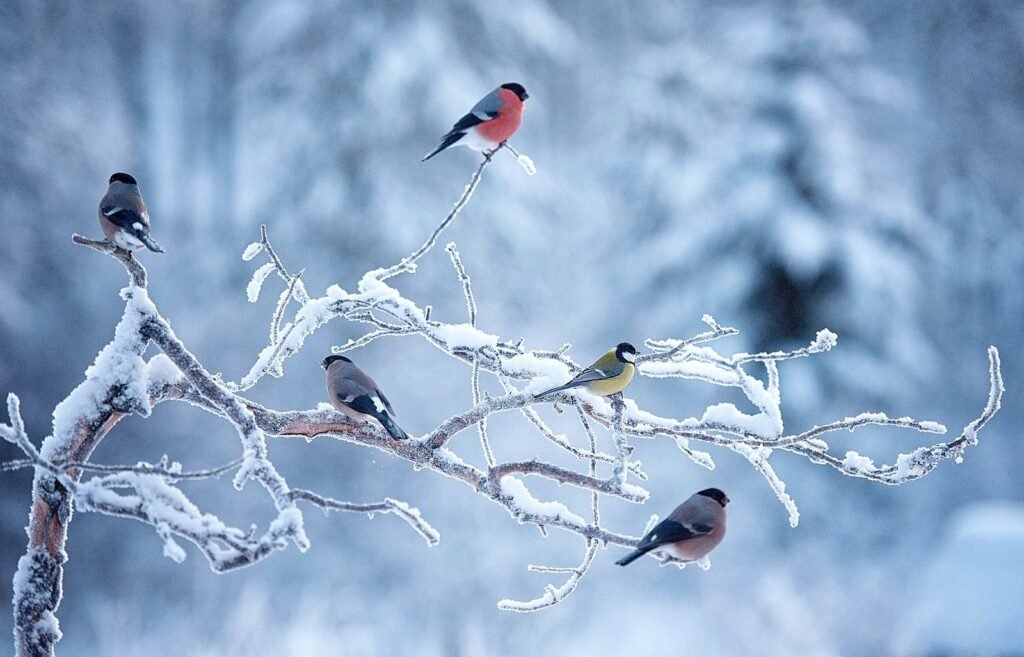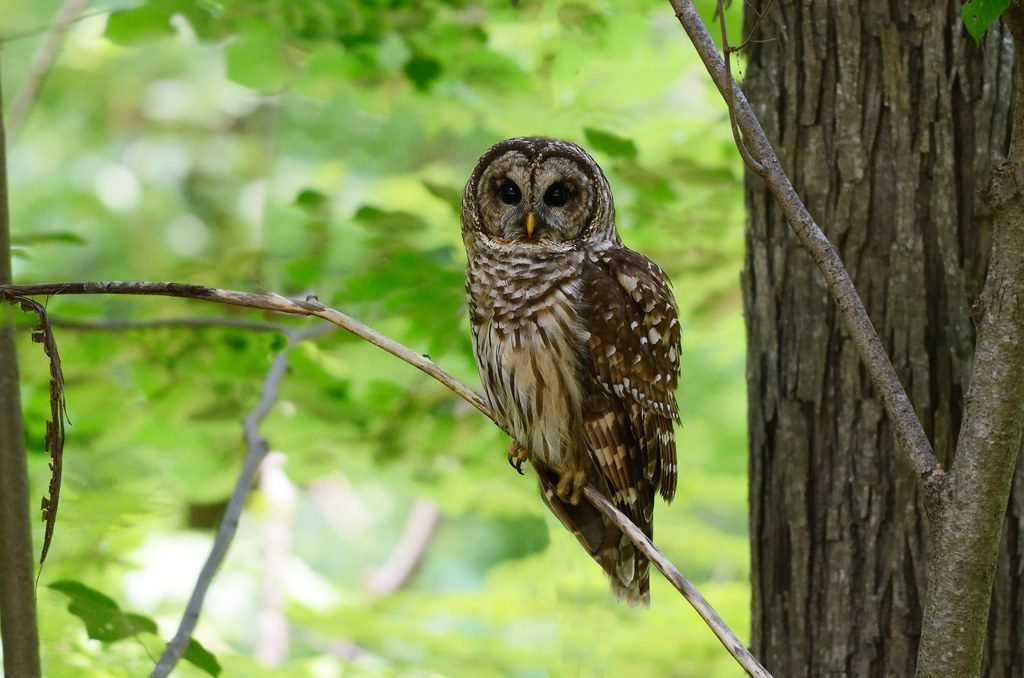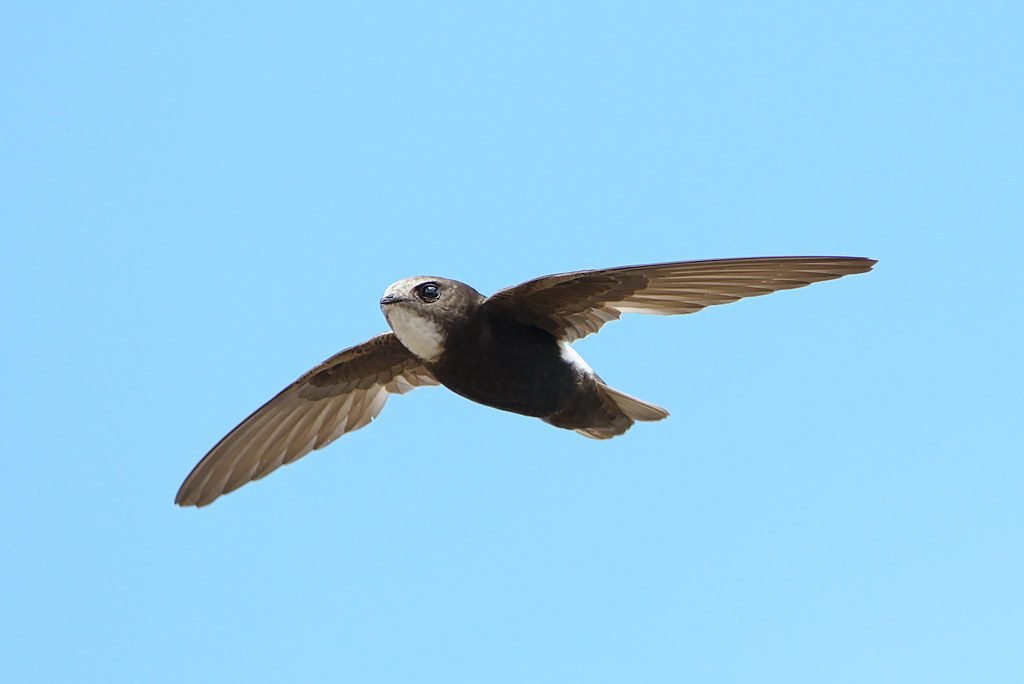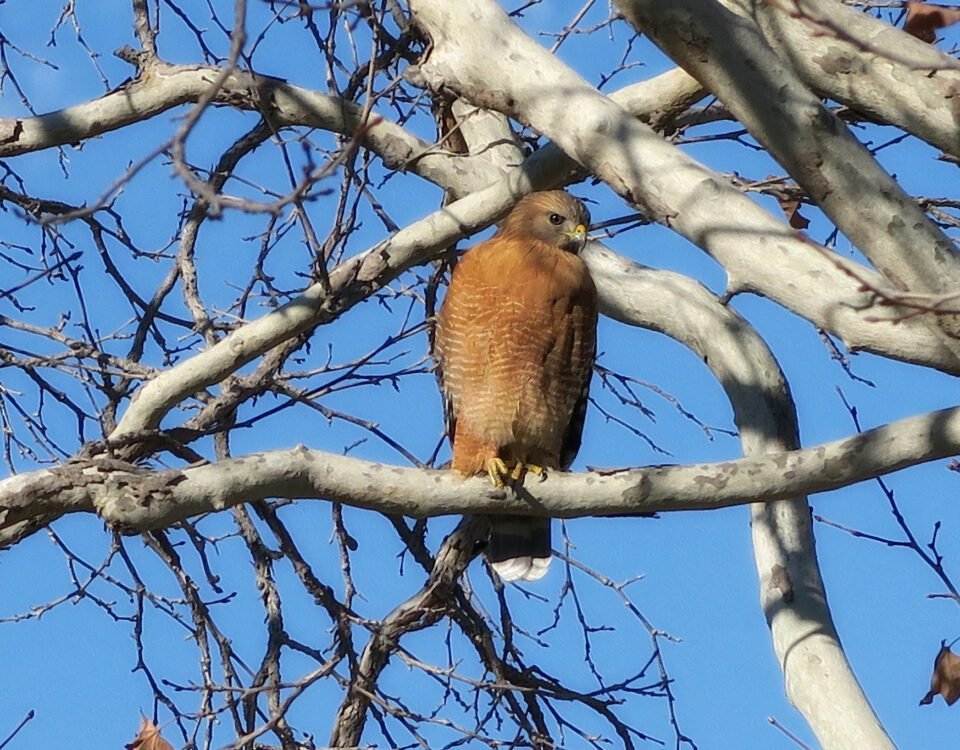


What’s The Difference Between Bluebirds & Robin Eggs?
November 13, 2023


Can Birds Eat Cat Food? A Comprehensive Guide
November 14, 2023Unlike humans, birds have unique physiological and environmental needs influencing where and how they sleep. But first, do birds really sleep?
Yes, birds do sleep. Many songbirds seek out a hidden spot on a branch or within a tree hollow, puff up their feathers beneath their exterior plumage, rotate their head backward, nestle their beak into the feathers on their back, and then close their eyes. Waterbirds often rest while floating on water, while some of them also choose to sleep on branches or in tree hollows, similar to their land-based animals.
This topic explores the world of birds to understand their sleeping habits, exploring questions such as where they find rest amidst their often challenging environments and how their sleep differs from that of mammals.
Related Read: Can Birds See At Night? Unique Anatomy Of Bird’s Eye
Do Birds Sleep? The Basics
All bird species sleep, but the specifics of their sleep—such as location, duration, and patterns—vary across species, life stages, and even seasons.
For birds, sleeping means a diminished awareness of their environment, which can be risky given their numerous predators. Despite the risks, sleep is essential, as lack of rest can hinder their functionality.
Typically, birds sleep 6-12 hours each night, day, or both. Daytime birds often return to their roosts at dusk and depart at dawn. Some species, like woodpeckers, might retreat to their sleeping spots before sunset and linger there longer the following morning.
Birds have developed various sleeping strategies, including standing on one leg, floating on the ocean, or even sleeping mid-flight to catch some rest.
A noticeable difference in how birds sleep compared to other animals is their posture. While certain animals, like horses, can sleep standing, most mammals lie down. Although some birds also lie down, most remain upright while sleeping, perched, or sitting on their sides.
Where Do Birds Sleep?
Wild Birds
Wild birds typically avoid sleeping in open areas, opting for hidden, secure spots that offer protection from predators and harsh weather. Even ground-dwelling birds like wild turkeys prefer to sleep in trees, high above potential ground predators.


Wild Birds
Waterbirds & Shorebirds
However, not all birds sleep on branches. Waterbirds and shorebirds often rest near water bodies, with some ducks choosing to sleep on a partially submerged object, tucking one foot into their body for warmth.


Wood Ducks
Small Birds
Small birds seek shelter under dense vegetation or brush for adequate cover. Many species find comfort in cavities, such as empty birdhouses, hollow trees, small caves, rock crevices, chimneys, or the deep nooks of trees.
Wading Birds & Waterfowls
Conversely, wading birds and waterfowl often sleep on water, floating safely away from land predators or using small islands as their resting places.
Typically, birds do not use their nests for sleeping, except during egg incubation or when keeping young chicks warm. Once the young have grown, nests are generally abandoned as sleeping spots.


Wading Birds & Waterfowls
After nesting season, nests often become unsuitable for sleeping due to accumulated feces, food remains, shed feathers, and potential mite infestations. They also tend to deteriorate due to the activity of the hatchlings.
Some birds may return to birdhouses for winter roosting, but this is only if the birdhouse has been thoroughly cleaned and winterized, making it a suitable environment for rest.
Migratory Sleepers
Migratory birds cover long journeys between breeding and wintering habitats, often covering great distances. These migrations are usually segmented, with periodic breaks for rest, sometimes extending to several weeks. Remarkably, some birds engage in continuous flights that can last up to eight days without a pause!
When choosing resting spots during migration, these birds don’t settle for just any location. They prefer places rich in food sources and safe roosting sites, allowing them to replenish energy and rest securely.


Winter Birds
Specific locations, such as desert oases or the final stretch of land before a large water body, are particularly appealing.
Furthermore, social migrating birds can gather in impressive numbers. For instance, migrating Barn Swallows often roost in vast reedbeds, sometimes numbering in the millions.
Birds Sleeping in Nooks and Cavities
Many bird species, drawn to the security of old woodpecker cavities, also find refuge in various natural and man-made nooks and cavities for sleep.
This includes a range of shelters such as small caves (used by Barn Owls), spaces under the eaves of buildings (preferred by Feral Pigeons), natural tree holes (favored by Screech Owls), and even burrows made by mammals (utilized by Burrowing Owls).
Choosing cavities like woodpecker holes or birdhouses for rest comes with clear advantages. They offer protection from the elements, such as rain and wind, and keep the birds concealed. However, these cavities also carry risks, mainly if they’re found by predators of a similar size.
How Long Do Birds Sleep? Is It Normal For Them To Sleep All Day?
Typically, tropical birds sleep for about 10 to 12 hours each day. This means they have an equal split in their daily cycle, with 12 hours of sleep and 12 hours of wakefulness.
Among parrots, the species requiring such lengthy sleep periods include:
- African Grey Parrots
- Macaws
- Cockatoos
- Alexandrines
- Amazons
- Eclectus
- Caiques
- Senegal Parrots
- Cape Parrots
- Quakers
- Ringnecks
- Red-bellied Parrots
Parrots living farther from the equator exhibit different patterns, such as the Kea, Australian Parakeets, and Ringnecks. In the winter, they need 10 hours of daylight and 14 hours of darkness, resulting in more sleep during these colder months.
Conversely, in summer, their sleeping hours decrease due to more extended daylight periods.
Moreover, it’s uncommon for birds to sleep all day unless they are in the molting phase. Molting demands significant energy for feather regrowth, necessitating extra sleep.
If a bird is not molting but still sleeps throughout the day, it’s advisable to consult an avian veterinarian to check on the bird’s health.
Unique Sleeping Position Of Birds
Standing on One Foot
During night rest, birds often lift one foot into their feathers and securely grip a branch with their feet. They maintain stability even with their eyes closed.


Bird Standing on One Foot
Head Tucked into Feathers
A frequent sleeping behavior in birds is to twist their head into their feathers. Many songbirds and waterfowl puff up their down feathers and shield their sensitive body parts within these feathers for protection.


Why Do Birds Sleep with their head backward?
By tucking their feet or bill under their feathers, birds lose less body heat. Their feathers create insulating air spaces, aiding in warmth retention. When a bird’s bill is nestled deep in its feathers, it breathes in air heated by its body.
Sleeping in Flocks
Birds often sleep and roost in groups. This communal roosting increases each bird’s survival chances, with some species forming night roosts of thousands.
The presence of more birds heightens predator awareness and offers more targets if a predator attacks. In winter, birds like chickadees, tits, and bluebirds huddle together in tight spaces for warmth.
Unihemispheric Slow-Wave Sleep (USWS)
At night, birds face challenges like cold, predators, and disturbances. They often sleep in short bursts and may awaken due to these threats. Some even sleep with one eye open, using unihemispheric slow-wave sleep (USWS).
This allows them to stay partially alert, with one half of the brain active and one eye open while the other half rests.
USWS is common in waterfowl and ducks; other species, like peregrine falcons and Eurasian blackbirds, also exhibit this behavior. It even enables some birds to sleep while flying.
Migratory birds use USWS during long flights as it allows them to rest and navigate simultaneously. For instance, the Alpine Swift can reportedly fly for 200 days straight, relaxing and flying concurrently.
Can A Bird Fall From A Tree While Sleeping?
The likelihood of a bird falling from its perch while sleeping is minimal. This is due to the unique anatomy of a bird’s feet. When a bird sleeps, the flexor tendons in its talons tighten, securing a firm grip on the branch.
The grip is released only when the bird straightens its legs.
This remarkable feature of birds’ foot anatomy ensures they maintain a firm hold and stay locked onto the branch they’re resting on, preventing them from slipping or falling off their perch.
Do Birds Dream?
Research, including a notable study on zebra finches by Amish S. Dave and Daniel Margoliash from the University of Chicago in the late 1990s, indicates that birds experience dreams.
Birds go through Rapid Eye Movement (REM) and Slow Wave Sleep (SWS) or Non-Rapid Eye Movement (NREM) phases during their sleep, similar to humans. While the full role of REM sleep is not entirely understood across species, it’s known that dreaming happens during this phase in humans.


Whether birds dream and what they might dream about remains largely a mystery. Intriguing findings from studies on Zebra Finches have shown brain patterns and muscle movements linked to singing while they sleep.
These patterns, however, differ from those during their daytime singing, and the purpose of these nocturnal activities is not fully comprehended.
Additionally, a study published in Nature Communications revealed that in Pigeons, the brain areas involved in visual processing during flight are active during REM sleep.
This suggests that these birds might be dreaming about flying, providing a fascinating glimpse into the possible dream worlds of birds.
The Special Cases
Owls
While commonly known as nocturnal, many owl species are active during winter days or in cloudy weather, with some being more diurnal than nocturnal. Even those primarily nocturnal may be awake for parts of the day and rest at night.


Barred Owls
Swifts and Frigatebirds
Certain birds, like Albatrosses, can remain in flight for extended periods, spanning weeks, and are also known to sleep while floating on water for hours.
The Frigatebird, a tropical seabird, is renowned for its ability to sleep while flying, using Unihemispheric Slow Wave sleep. These birds, unable to swim, can stay aloft for over two months over open seas.


Swifts
Swifts, related to Hummingbirds, are another example of avians that sleep mid-flight, as they land only for nesting. Though challenging to observe at night, it’s believed that Swifts sleep in brief intervals.
Migration and Sleep
Many day-active birds undertake nocturnal migrations to evade predators and strong winds. This poses a challenge for those needing daytime activity for feeding. To compensate, they may nap during the day.
Migratory birds often pause at stopover sites or congregate in key areas, offering food and safe sleep.
However, this is feasible only when they can land on solid ground. Some small songbirds crossing expanses like the Gulf of Mexico must fly non-stop for 24 hours without rest.
In extreme cases, weary migrants over oceans resort to unconventional rest spots, such as ships and oil rigs.
Also, Read: Do Hummingbirds Migrate in Flocks or Alone? ANSWERED
Assisting Birds in Achieving Restful Sleep
Birds can be easily disturbed by noises and shadows during the night. However, you can enhance their sleeping conditions with the following strategies:
- Develop a bird-friendly environment offering ideal resting places, such as roosting boxes, native coniferous trees, or brush piles.
- Install barriers to keep feral cats and other predators away from birdhouses and roosting spots, ensuring the safety of sleeping birds.
- Offer nutrient-rich foods like sunflower seeds, almonds, and suet. These high-calorie foods can help birds stay nourished through cold nights.
- Adjust outdoor lighting to avoid confusing birds, disrupting their natural night cycles, or attracting predators to where birds are resting.
- Cover their cages at night to block out light and provide a more serene sleeping environment if needed.
Conclusion
From snug birdhouses in backyards to the lofty skies above, birds have mastered the art of sleeping in various extraordinary places and manners.
The role of sleep in bird life is often underestimated when considering their behaviors. Yet, this essential rest has been crucial for their survival and adaptation across diverse habitats for millions of years, enabling them to thrive in even the most challenging conditions.
Exploring avian behavior isn’t just intriguing for bird enthusiasts; it’s critical for conserving and protecting our global avian wonders. Roosting sites are as vital as feeding and nesting areas for their well-being.
Consider the birds in your vicinity tonight and observe their roosting habits. The hidden lives of birds offer endless fascination, and there’s always something new to discover about these remarkable creatures!



